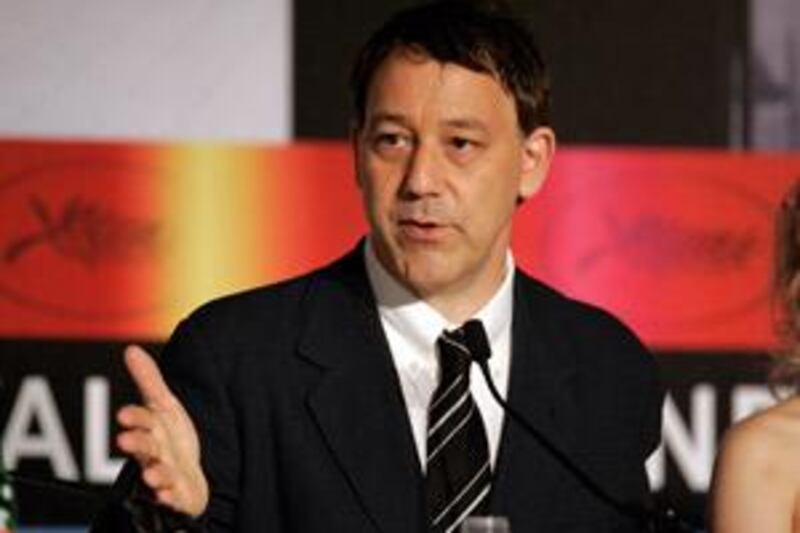The demented shrieks and giggles emitted by the demons in Sam Raimi's Evil Dead trilogy could also be the sound of the director himself having fun. Raimi clearly gets a charge out of unleashing his high-pitched brand of slapstick horror. And it's the shrieks and giggles that dominate his new film Drag Me to Hell, which may be the most accomplished of Raimi's fright shows.
Drag Me to Hell has a great grindhouse title, fitting for a movie from a director who got his start in the grindhouses. Those sleazy theatres, where movie enthusiasts were scattered among the grittier elements of urban life, were the places where Raimi's first movie, The Evil Dead, played in 1983, and the director's journey from being an independent filmmaker to a mainstream Hollywood success (following his three very profitable Spider-Man films), says much about what Hollywood has gained and lost in those years.
Part of the pleasure of going to a movie like The Evil Dead was the relief it offered from mainstream Hollywood respectability. Grindhouse audiences didn't want to have to wade through plot or character development to get to the action. The set-up of The Evil Dead, a group of friends in a remote cabin besieged by murderous spirits, was beyond basic. The acting not even up to that. Raimi and his friends, some of whom acted in the film, had put the money together to make the film because, as he said: "It seemed like in the States you could make a cheap movie if it was a horror movie. The audience would still be frightened by it and they wouldn't react badly to its cheap quality."
What lifted The Evil Dead above grindhouse cheesiness was the inventiveness that Raimi showed in trying to fulfil his self-proclaimed ambition of making the most relentless horror movie ever. The furious travelling Steadicam shots allowed the audience to share the point of view of the marauding spirits. Physically, the film denied the audience a safe space. What was missing was humour, which the filmmaker remedied in the sequel Evil Dead II: Dead By Dawn. Bruce Campbell, a bland lantern-jawed lead in The Evil Dead, showed the crazed comic inside that deceptively rugged exterior, the quality that has made him a cult idol ever since.
There was one more zombie film to come: Army of Darkness in 1993. But Hollywood had started to take notice of Raimi. What followed was not always satisfying. The 1990 comic-book thriller Darkman, his Hollywood debut, was a near-perfect visual parallel for the flatness of comic-book panels. Unfortunately, the flatness extended to the film itself. And while Sharon Stone looked great in her chaps and leathers in Raimi's western pastiche The Quick and the Dead, the movie felt strained. But Raimi, who always wears a suit and tie on set, was showing he could tackle genres other than the horror film. And in his next two pictures, A Simple Plan and The Gift, Raimi displayed an emotional range that hadn't been visible in his Guignol pyrotechnics.
A Simple Plan, a snowbound Midwestern noir based on Scott Smith's novel, is the work of a director who has reached the point where he believes entertainment has to be something other than car chases and explosions and killings. It demonstrated that Raimi was a gifted director of actors, a talent even more apparent in the 2000 Southern gothic The Gift. Following the baseball drama For Love of the Game, Raimi began work on the Spider-Man trilogy. Enormous hits, the films were human-scaled blockbusters that didn't set out to pummel the audience. But the movies lacked oomph; they fled from your mind as soon as the lights went up.
Drag Me to Hell comes at a time when Hollywood had usurped the exploitation aesthetic. And you can't find the relief from respectability in movies that are as prepackaged and calculated as any other Hollywood product. But there's nothing respectable about the bughouse craziness of Drag Me to Hell. Unburdened by the event-movie expectations of the Spider-Man films, Raimi cuts loose with a picture in which the scariest moments are often the funniest.
Drag Me to Hell takes off from the hoariest premise imaginable: a curse. The accursed is a young loan officer (Alison Lohman) who forecloses on an old woman, kicking her out of her house. The kick of Drag Me to Hell is that the victim is no innocent. Raimi makes a few stabs at getting us to identify with Lohman, showing how she's a doormat for her boss and looked down on by the mother of her rich boyfriend (Justin Long). But, intentionally or not, Drag Me to Hell has connected with the zeitgeist in America at a time when audiences there have no sympathy to expend on a loan officer.
And Lohman is no unwitting victim. She chooses to further her career by turfing that old lady out on the street. By the time a psychic has advised her that an animal sacrifice might take away the curse and she's stalking around her house with a butcher's knife calling "here kitty, kitty" to her cute little kitten, we're free to enjoy what she's got coming to her guilt free. Raimi uses her seeming innocence as a kind of moral cluelessness. She becomes the essence of every young go-getter who justifies doing whatever it takes to get ahead.
Raimi has a reputation for being one of Hollywood's nice guys. Drag Me to Hell made me believe it. With all its gross outs and nasty kicks, there's nothing cynical about this horror comedy. Raimi indulges the audience in a full-bore spook show that's both a kidding and affectionate nod to the hoariest horror conventions. And just as, in his final films, Luis Bunuel showed his amusement at the monstrous rich he had railed against for years, Raimi is showing his amusement at the new young breed of monsters out for themselves.





